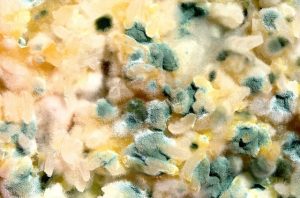 Mold can be a very serious problem for rental property owners and their property managers. It can be hard to find and expensive to treat, and can also be a health concern for tenants. Because so much is at stake it’s very important for property managers such as Martin Feinberg to spot mold problems and fix them as soon as possible.
Mold can be a very serious problem for rental property owners and their property managers. It can be hard to find and expensive to treat, and can also be a health concern for tenants. Because so much is at stake it’s very important for property managers such as Martin Feinberg to spot mold problems and fix them as soon as possible.
Unfortunately, mold isn’t always obvious and detecting it can be a challenge. The easiest ways for property managers to keep on top of potential mold problems is to consistently check for it.
When looking for mold property managers and tenants should pay attention to the following signs, which could signal a more serious problem:
- Dark colored spots on walls, ceilings, or fabric.
- Rental units that smell musty or like mildew.
- Tenants complaining of allergy-like symptoms.
If mold is discovered in a unit, the next step is remediation. Mold particles are microscopic and will always be present so complete removal of mold from an environment is not possible and shouldn’t be the goal. If mold is colonizing in a unit an experienced property manager should focus on getting the spore level back to normal. Sometimes this means fixing the problem without professional help (if the problem is small) and sometimes it means hiring someone to manage the situation (if the infected area is large). According to All Property Management, the easiest way to do that is to follow the ten steps below.
- Fix the water problem: Whatever is causing the moisture to spread, stop it. Repair the leaky pipe, seal the crack in the foundation, install a vent, run a dehumidifier in the basement—you name it. If you don’t fix the problem at the start, mold will repopulate and waste your remediation efforts.
- Protect yourself: Wear gloves, a mask, and goggles. We also recommend wearing old clothing you can throw away when done. Use a box fan to circulate fresh air.
- Seal the affected room off from the rest of the property: Isolate the contaminated area. Close all doors and windows between other rooms on the property. Cover all doorways to the affected room with sheeting, and seal the seams and slip opening entrances of the sheeting with duct tape.
- Moisten moldy materials to prevent the spread of spores: Stop the spread of dust and airborne spores by misting the contaminated area.
- Remove affected materials: Open up moldy walls with a screwdriver and remove moldy carpets in sections with a knife. Use a wet-dry vacuum to clean up any debris.
- Bag what you remove immediately: Discard all wet and moldy materials in plastic trash bags that are 6 mil thick and tie them closed. Note: Mil is the measurement used to classify plastic sheeting—check the package of trash bags to make sure you’re buying the right thickness. Before removing the bags from the contaminated area, wipe them down with a damp cloth and a detergent solution. Then dispose of them as regular trash.
- Scrub surfaces: Clean moldy non-porous materials and wood surfaces with a wire brush and wipe clean with disposable wipes. Then use a soft brush to scrub all surfaces with a mixture of a quart of water and half a cup of bleach. When you’re done, wipe—but don’t rinse—the surfaces so the bleach can kill the mold.
- Dry out and clean up: Throw out all supplies when you’re done (including the box fan and your clothes). Remember to bag them in the heavy-duty trash bags as well. Let the cleaned materials dry by using a fan or dehumidifier.
- Replace all removed materials: If you chucked drywall, insulation, carpeting, curtains, baseboards, windowsills, and molding, make sure you replace or repair it. It’s always a good idea to remove a little more than that was affected for good measure.
- Bring in a professional maintenance crew to clean the entire unit: Have them disinfect every room.
 As with most things, the best way to handle a problem is to prevent it from ever occurring. Professional property managers like Martin Feinberg know that the key to preventing the spread of mold is stopping the spread of moisture. Property managers should always instruct tenants to report leaks and/or water damage immediately so repairs can be made before mold can become a problem. To make sure this happens some property managers even include such reporting requirements in their leases. Bathrooms and attics should always have proper ventilation in place, like fans or dehumidifiers, to help keep problem areas dry. Painting units or properties with paint containing mildew-cide, and properly sealing wood surfaces with pigmented shellac or an oil-based primer, can also help keep mold at bay. Lastly, routinely scheduled inspections can help property managers and rental property owners catch warning signs when tenants don’t.
As with most things, the best way to handle a problem is to prevent it from ever occurring. Professional property managers like Martin Feinberg know that the key to preventing the spread of mold is stopping the spread of moisture. Property managers should always instruct tenants to report leaks and/or water damage immediately so repairs can be made before mold can become a problem. To make sure this happens some property managers even include such reporting requirements in their leases. Bathrooms and attics should always have proper ventilation in place, like fans or dehumidifiers, to help keep problem areas dry. Painting units or properties with paint containing mildew-cide, and properly sealing wood surfaces with pigmented shellac or an oil-based primer, can also help keep mold at bay. Lastly, routinely scheduled inspections can help property managers and rental property owners catch warning signs when tenants don’t.